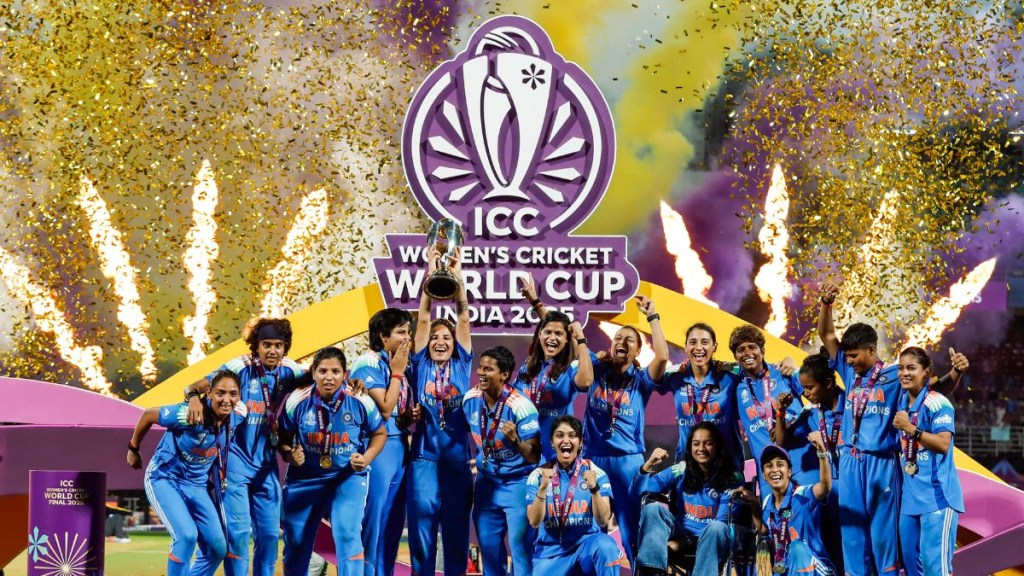It is with much perseverance and effort that generations of Indian women cricketers have had to win acceptability in a gentleman’s game. Sunday’s historic World Cup win against South Africa has convinced a cricket-crazy nation that Harmanpreet Kaur & Company too are deserving of the accolades typically reserved for male cricketers.
They too are superstars. The road to the finals wasn’t exactly easy with the team losing three matches on the trot to finalists South Africa, England, and Australia. But the players displayed steely resolve, especially in the semi-finals against Australia in what was arguably the greatest ever run chase, to bounce back.
They rose to the occasion when it mattered the most.
For women cricketers, this is indeed a 1983 moment. Just as the ’80s World Cup win transformed men’s cricket in India forever, 2025 will undoubtedly inspire generations of young girls to pick up the bat or the ball. And while Kapil Dev’s team were unfancied underdogs, Indian women have suffered heartbreaks at the final frontier several times.
On Sunday, they exorcised the ghosts of 2005, 2017, as well as 2020 (T20 World Cup), fulfilling the dream that legends like Mithali Raj and Jhulan Goswami dared to dream.
Even as they played like a team does, the tournament saw several stand-out performances. There was Jemimah Rodrigues—battling personal form, fighting for a regular place in the side, and suffering from anxiety—who made an inspirational century in the semi-finals. Then there was Shafali Verma, who was summoned to the side just days before due to an injury to opening batter Pratika Rawal.
Verma’s opening salvo with the bat and two crucial wickets in the South African innings won the 21-year-old the player of the match award. The final saw another great all-round performance—Deepti Sharma’s brilliant fifty and five-wicket haul that included the key scalp of South African skipper and centurion Laura Wolvaardt.
Several key contributions and a disciplined performance in the field showed that it was a collective triumph. Indeed, India boasts a depth of talent which is second to none. The fact that this is a young side, many of whom made their World Cup debuts, makes India’s achievement awe-inspiring. Barring Kaur and spinning all-rounder Sneh Rana, the 14 other members of the squad are below 30.
Unlike men, who have enjoyed infrastructural and institutional support for decades, women cricketers have often been short-changed on these counts apart from facing gender bias at various levels. To its credit, the Board of Control for Cricket in India has taken steps in recent years to redress this imbalance. It has tried to promote women’s cricket with a pay equity policy in 2022, resulting in better contracts.
Meanwhile, staging the Women’s Premier League (WPL) since 2023 has brought greater visibility and media coverage for the cricketers. Much like the Indian Premier League has unleashed new stars on the horizon in men’s cricket, the WPL has given the team exciting young players. The big crowds at the venues and a large broadcast audience—reflected in the surging ad spot rates for the final—are evidence of how women’s cricket is becoming more popular.
At the same time, one hopes the achievements of the cricket team will inspire other sportswomen—athletes, weightlifters, boxers, and table tennis or badminton players—to excel. We have abundant talent in this country and we must ensure it is not wasted.

